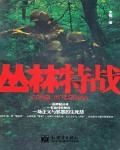Chapter 168: The Unbearable Wait
The Soviet Union, the United States, and Britain, no matter how the world comments on the post-war history, these three countries are the absolute main forces on the European battlefield, just like China and the United States are the absolute main forces on the Asian battlefield.
It is not easy for the leaders of these three countries to hold a meeting. At the very least, a safe meeting place needs to be determined and complete security arrangements need to be made. Any mistake or omission may lead to disastrous consequences.
For example, Stalin. No matter how he is evaluated by later generations, if the Soviet Union did not have him during the real Soviet-German War, the direction of the war would be unpredictable, because apart from him, there was no one in the Soviet Union who could bring together the strength of the entire country.
In order to ensure the smooth convening of this meeting, the Soviet Union, the United States, and the United Kingdom held several foreign ministerial meetings in succession starting in May, all in Moscow. Soviet Foreign Minister Molotov, US Secretary of State Cordell Hull, and British Foreign Secretary Eden held many tedious and repeated consultations on the specific issues that needed to be discussed at the three-nation summit.
As for the Soviet Union, it naturally hoped that the United States and Britain could open a second front in Western Europe as soon as possible to weaken the pressure faced by the Soviet Union and reduce the losses suffered by the Soviet Union; the United States focused on building a post-war world order and establishing an international cooperation organization based on it; Britain paid more attention to establishing a European institution that would include allies for consultation on issues related to the war.
The three major powers each had their own plans. For example, on the issue of opening a second front, the United States was not very positive, while Britain hoped to open a second front in the Balkan Peninsula, attack Yugoslavia and Hungary through Romania, and eventually launch an offensive against Germany.
The British plan to open a second front was actually to limit the Soviet Union's postwar sphere of influence to the Soviet Union's old sphere of influence in 1941. Romania, Hungary, Czechoslovakia, and Poland would become a buffer zone between Europe and the Soviet Union. From this British proposal alone, it can be seen that Britain had already formed a true iron curtain mentality at this time, and its naked anti-Soviet mentality had not changed because of the war.
The negotiation records brought by Molotov made Stalin extremely angry. He ordered Molotov to take a message to US Secretary of State Cole, saying that if the US and British Allied Forces set the location of the second front in the Balkan Peninsula, then the Soviet Union would not rule out the possibility of unilateral peace with German fascism.
Coincidentally, just as the Moscow Conference entered the second round of negotiations, Japanese Foreign Minister Matsuoka Yosuke sent a special envoy to Moscow to convey to Molotov a wish that the Japanese government was willing to act as a middleman to facilitate the talks between the Soviet Union and Germany.
Almost at the same time, Fu Bingchang, the Chinese Nationalist Government's ambassador to the Soviet Union, arrived in Moscow from Nanjing. After unsuccessful negotiations with Molotov, he submitted a memorandum to US Secretary of State Cole. In this memorandum, the ambassador elaborated in detail the huge sacrifices and costs paid by the Chinese government and the Chinese people in the fight against Japanese imperialism since the outbreak of the War of Resistance Against Japan. Therefore, China, as one of the four major powers in the anti-fascist war, deserves respect.
When there was a glimmer of hope of defeating the Germans, conflicts of interest within the Allies began to emerge. This is actually very easy to understand . According to Marxist theory, this is a question of the transformation between major contradictions and minor contradictions.
In May, the three foreign ministers held four meetings. At this time, the Soviet Union was still indispensable in the world anti-fascist camp, and the Soviet Union's Patriotic War also relied on the material assistance of the United States and Britain. Therefore, it became inevitable to find a point of convergence acceptable to both sides in the negotiations.
Before 1944, the Soviet government had an ambiguous attitude towards China. On the one hand, they supported the Chinese friendly parties in the same revolutionary camp, and on the other hand, they flirted with the Nationalist government. After May 1944, with the consultations of the three foreign ministers' meetings, the Soviet Union's diplomatic attitude began to change, and its support for the Nationalist government increased significantly, which was also based on the Soviet Union's own interests.
Also in early May, another incident occurred. Under Stalin's personal care, after many efforts by the guerrillas in the Kaluga theater, the search for Leonid finally came to an end. A guerrilla team found Leonid's crashed fighter plane in a jungle near Borisovsk, and also found the body of Leonid, who was believed to have parachuted to escape.
After much effort, Leonid's body was sent to Moscow in mid-May, and the rumors of his treason were naturally refuted. Subsequently, Leonid was awarded the title of Hero of the Soviet Union and posthumously awarded the rank of Major General. This person who had been a tragedy for decades in Yuri's previous life finally received fair treatment.
Still in this May, after nearly three years of fierce fighting, the British and American Allied Forces finally achieved the final victory in North Africa. On May 13, the North African Corps of Germany and Italy were forced to surrender to the Allied Forces, and the North African war officially ended.
In this protracted war, the Allied forces of the United States, Britain and other countries successively defeated 12 divisions of Germany and Italy. The Battle of Moscow... Well, it can't be compared with the Battle of Moscow, and it can't be compared with the Battle of Stalingrad, but in any case, it was a crucial battle of great significance. Because of the victory in this battle, the British and American Allied Forces opened up the passage to Sicily, making the Allied forces' idea of opening a second front in Europe feasible.
Also this month, the largest and most far-reaching Jewish riot since the outbreak of the war broke out in the Jewish district of Warsaw, the capital of Poland. Although the riot was quickly suppressed, it to a certain extent reflected that the German army's control over the occupied areas was gradually weakening.
Although the overall situation is developing in a good direction, the silence in the Kursk direction still makes people feel crazy.
However, in Yuri's opinion, the later the German offensive in the Kursk direction was launched, the more advantageous it would be for the Soviet army, because during this waiting period, the Soviet equipment department would have more time to deploy anti-tank weapons that could be used to deal with the German Tiger tanks in the Kursk direction.
Ever since the German Tiger tanks appeared in the Leningrad area, the Soviet combat department has been studying how to deal with this steel monster. In addition to large-caliber anti-tank guns and anti-aircraft guns, the Soviet equipment department has also demonstrated the Soviet army's existing ground attack aircraft and self-propelled artillery.
In terms of ground attack aircraft, the killing effect of the Il-2 ground attack aircraft on Tiger tanks was enough to satisfy the Supreme Command, but it was difficult to achieve any results in terms of self-propelled artillery.
After discussion, the Soviet Army's equipment department began to do its best to mass-produce the self-propelled assault gun codenamed "KV-14", officially known as SU-152. From the end of March to mid-to-late May, arsenals in Chelyabinsk, South Ural, Kolkino, Upper Ufalei and other places in the Ural region began to work tirelessly to produce this type of assault gun. By the beginning of June, three assault artillery regiments equipped with this type of self-propelled artillery were formed and deployed in the direction of Kursk.
In addition, the Soviet equipment department also issued an order to mass-produce 76mm ZIS3 cannons in 27 arsenals in the rear. In addition to being transported to the Kursk direction to build anti-tank artillery positions, the Soviet army also formed two three-regiment anti-tank artillery brigades in the Voronezh Front and the Central Front, each brigade was equipped with 72 artillery of this type.
As the Chief of Operations of the General Staff, Yuri also delivered anti-tank infantry exercise tactics to the two fronts. The exercise plan came from Yuri's experience in training infantry anti-tank in Lutsk. It mainly required the infantry to hide in the trenches and have tanks roll back and forth on top of the trenches to train the soldiers' ability to continue fighting under such high-intensity psychological pressure.
The Central Front commanded by Rokossovsky began conducting similar anti-tank infantry exercises in early May, while the Voronezh Front commanded by Golikov moved faster. The day after the tactical training order for the exercise was issued, he promoted and adopted this training method throughout the entire front.
As a result, throughout May, including a period of time in early June, the Soviet army's large-scale exercises never stopped on the two wings of the Kursk defense line. Tens of thousands of Soviet soldiers braved the heavy rain in early summer, crawled and rolled in the muddy trenches, used mud and gravel as anti-tank grenades, and launched attacks on imaginary enemy tanks advancing within the defense line.
This continuous training did not end until mid-June. According to the order of the Supreme Command, starting from June 12, the defense forces on the Kursk front line entered a state of standby. At the same time, the various firepower points and anti-tank firepower fortresses were redeployed and concealment measures were added. Light and radio communication control was implemented throughout the Soviet defense line. Large-caliber anti-aircraft artillery was dragged into the position. The General Staff issued an order to strictly fire at the German aircraft. Their target was the German tanks that were attacking in their respective areas.
Starting from June 15, Stalin convened members of the Supreme Command, members of the People's Commissariat of Defense and members of the Military Committee to attend meetings for four consecutive days. At the same time, he also informed the Western Allies of the intelligence that the Soviet Union and Germany would launch a major battle in the Kursk area in the near future.
On June 20, Harry Hopkins, special envoy of US President Roosevelt, and Holt Monckton, special envoy of British Prime Minister Churchill, arrived in Moscow. They will represent the United States and Britain and follow the progress of this decisive battle.



